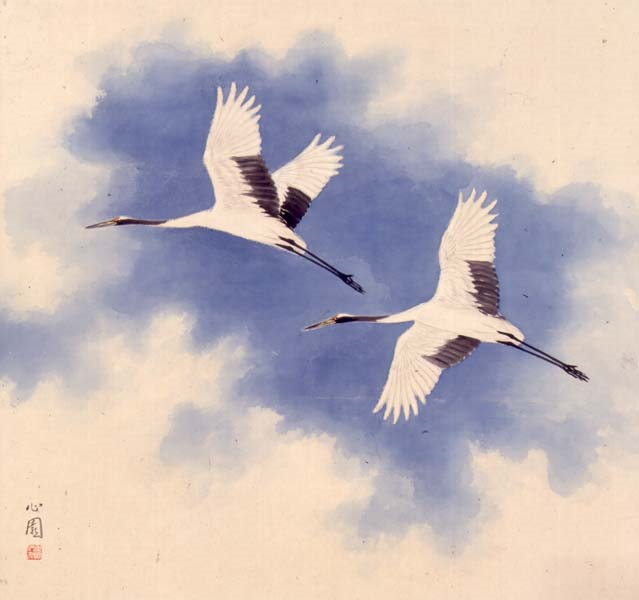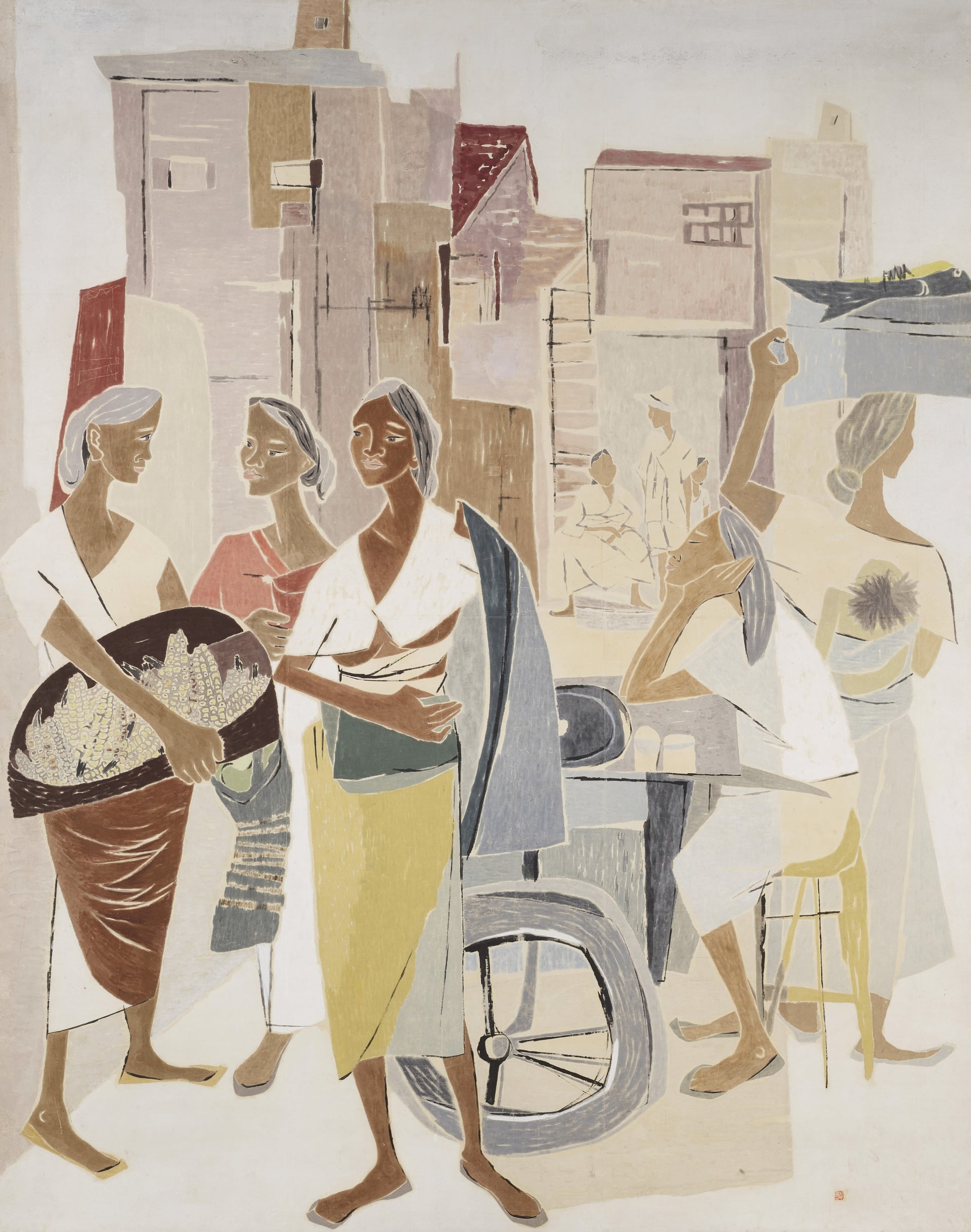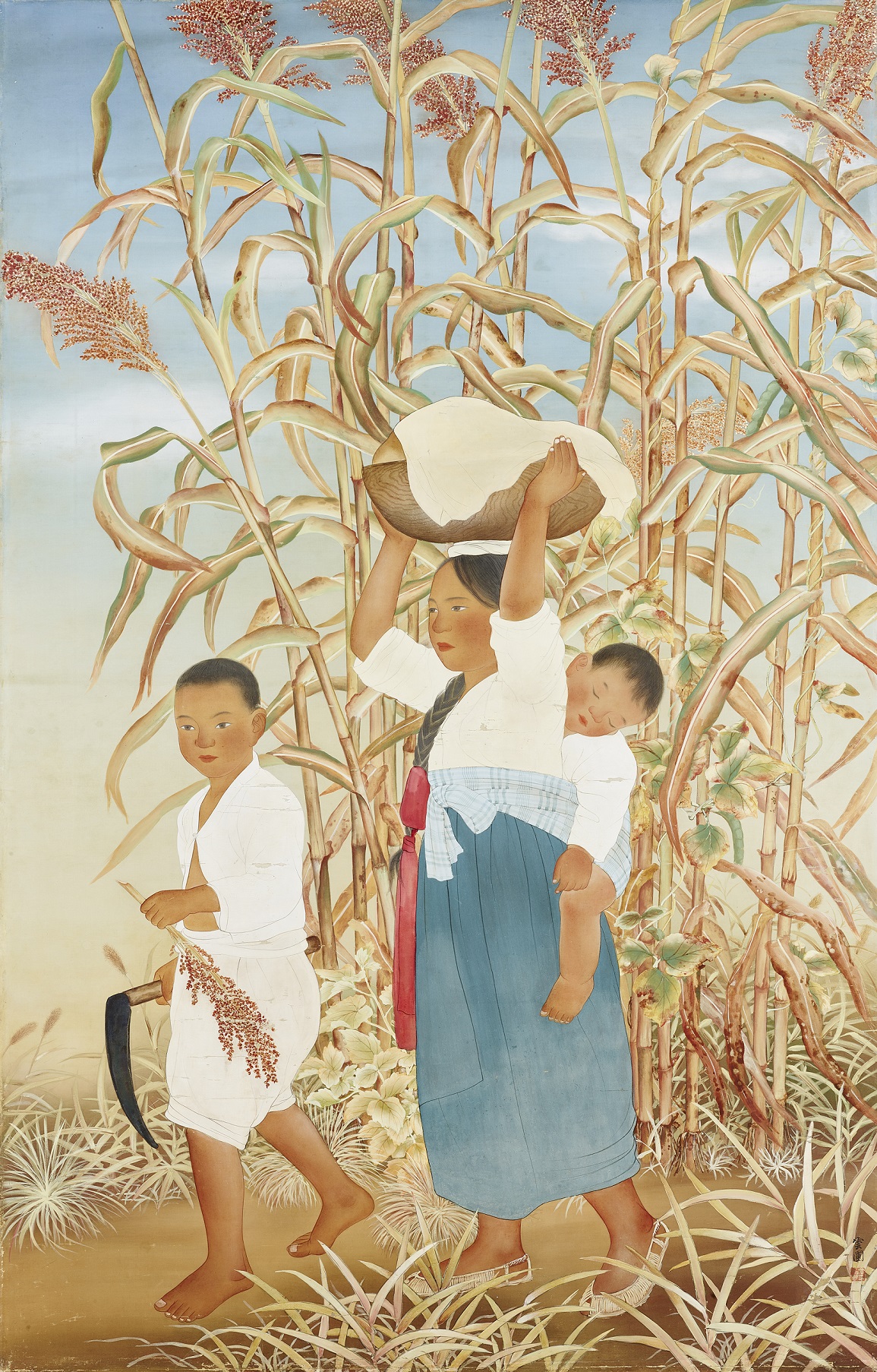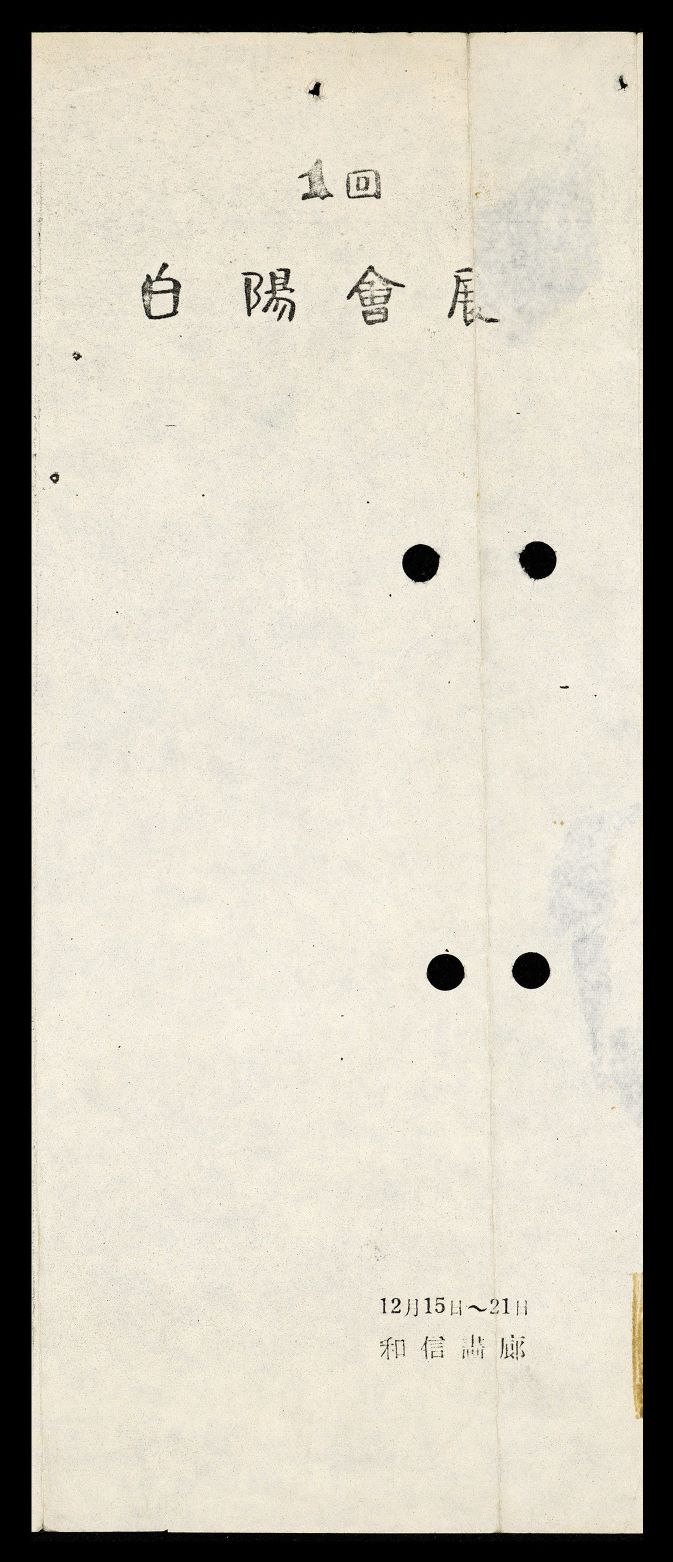
Cho Joonghyun, Crane, unknown, Ink and color on paper, 67x67.5cm. MMCA collection
Cho Joonghyun
* Source: MMCA
Related
-

Park Rehyun
Park Rehyun (1920-1976, pen name Woohyang) studied at Gyeongseong girls Normal School and graduated from the Department of Japanese Painting at Tokyo Women’s Art School in 1944. She studied at the Pratt Institute in New York and Bob Blackburn’s Print Studio from 1969 to 1973. After she married Kim Kichang, she held several solo and collaborative exhibitions with her husband and contributed her works to Paek Yang Fine Art Exhibition. She won a Changdeokgung Palace Award at the Joseon Art Exhibition [Joseon misul jeollamhoe] in 1943, a President Award at the fifth National Art Exhibition (Gukjeon) in 1956, a President Award at the eighth Great Korean Art Association Exhibition in 1956, and a Shin Saimdang Award in 1974. During the colonial period, Park Rehyun produced Japanese style color portraits, then, after independence she moved toward a semi-abstract technique, often featuring the three-dimensional formal interpretation of objects and a division of planes and using traditional Oriental painting materials. In the 1960s, she gradually replaced this approach with a splashed ink and pre-dyeing effect. Then, after moving to the U.S., she expanded her oeuvre to include print and tapestry.
-

Kim Kichang
Kim Kichang (1913-2001, pen name Unpo or Unbo) studied Eastern painting at Kim Eunho’s art studio Nakcheongheon. After his debut in the tenth Joseon Art Exhibition [Joseon misul jeollamhoe] in 1931, he won special selections from 1937 to 1940, and became a renowned painter. He was appointed as the first president of Paek Yang Painting Association and became a professor at Hongik University and Soodo Women's Teachers College. He was awarded the Order of Civil Merit, Peony Medal in 1981 and the Korean Art Academy Award in 1983. After he passed away in 2001, he was awarded a posthumous Geumgwan Order of Culture Merit award. Although Kim initially focused on colorful figure paintings, following in the legacy of his mentor Kim Eunho, in his later career he collaborated with his wife Park Rehyun to modernize Korean painting by adopting cubism and abstraction. He reinterpreted traditional folk paintings in his representative works, such as Blue-green Landscape Painting series started in the 1970s and his Fool’s Landscape Painting in the 1980s and was inspired by portraits of historical figures. He contributed to the development of Korean modern art by working in an expanded formal territory from figuration to abstraction and addressing subject matter from folk painting, to figure and landscape painting.
-

Paek Yang Painting Association
An art group formed in 1957 to explore new perspectives on Korean paintings and educate future artists. The group was formed by nine artists including Kim Kichang and Park Rehyun of the Husohoe (who were students of Kim Eunho, also known by his pen name I-dang), Kim Youngki, and Chun Kyungja. In January 1961, the group organized a touring exhibition in Southeast Asia, which is noteworthy as the first overseas exhibition held by a Korean private-sector art organization. In this traveling exhibition, the term “hangukwa (Korean painting)” was used for the first time to refer to traditional ink painting, instead of the previously dominant term “Eastern painting.”






